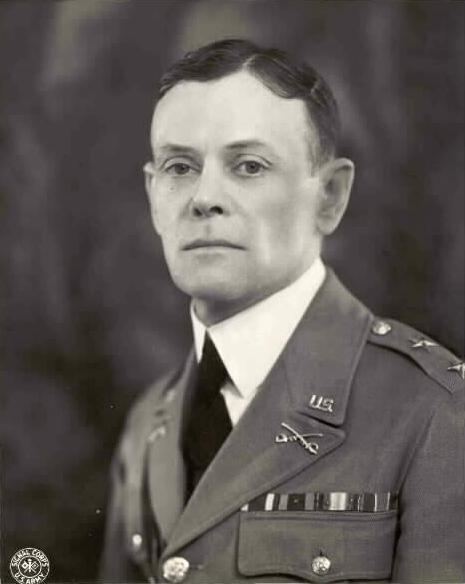Role Olympic athlete Name Guy Henry | ||
 | ||
Born January 28, 1875Fort Robinson, Nebraska ( 1875-01-28 ) Commands held 3rd Cavalry Regiment7th Cavalry BrigadeArmy Cavalry School Parents Guy Vernor Henry, Julia McNair Olympic medals | ||
Years of service 1898–19391941–1947 | ||
Major General Guy Vernor Henry, Jr. (January 28, 1875 – November 29, 1967) was an American horse rider who competed in the 1912 Summer Olympics. He served as a major general in the United States Army.
Contents
Early life
Guy V. Henry, Jr. was born into the military life. Son of Guy Vernor Henry, he went on to graduate from West Point in 1898, and distinguished his military career by earning the Silver Star in 1899 during the Spanish–American War.
Henry went on to study at the French Cavalry School in Saumur, France and used the knowledge he gained there to change the treatment and training of US Cavalry Horses. This included starting horses not by "breaking" them using the traditional western methods, but by training them on the longe, then slowly teaching them to accept the weight of a human on their back. He also brought dressage methods from both the French and German schools, with a great deal of influence from Baucher, and as senior instructor of equitation at the Mounted Service School at Ft. Riley he insisted in teaching new recruits to properly use the aids and promoted the European methods. Henry helped to institute the high level of horsemanship at Ft. Riley, helping to develop farrier and veterinary programs which were to become required courses for cavalry lieutenants. He also got rid of the harsh curb bit used by the Cavalry, known as the Shoemaker bit, and replaced it with either the snaffle bit or the double bridle.
Olympic equestrian career
Henry competed in all three Olympic equestrian disciplines – dressage, eventing, and show jumping – for the United States during his years in the Army. His most distinguished Olympic results occurred at the 1912 Olympic Games in Stockholm, where he won the bronze medal in the team eventing competition, finished 11th in the individual event, 4th in the team jumping competition, and 13th in the individual dressage competition.
Henry later served at Chef dÉquipe for the US Teams from 1936–1948, was chairman on the Olympic Equestrian Committee from 1930–1960, and director of equestrian events at the 1932 Summer Olympics in Los Angeles.
